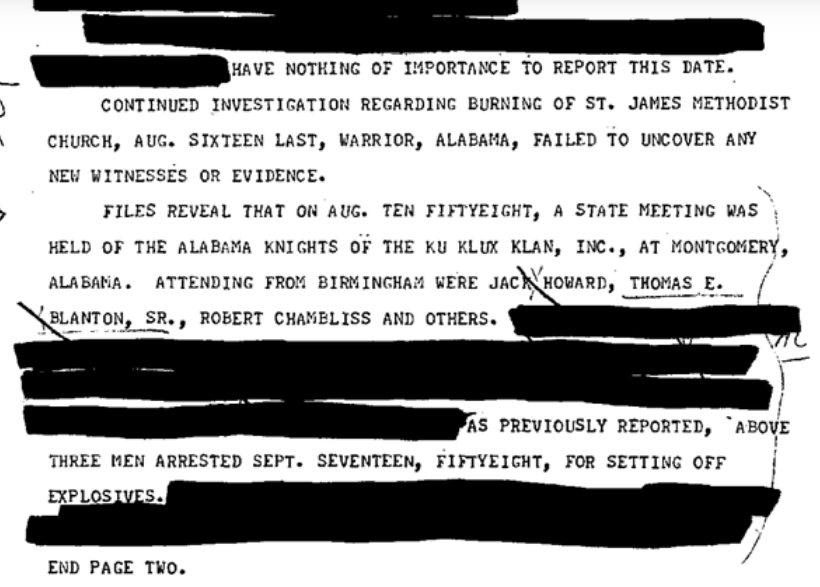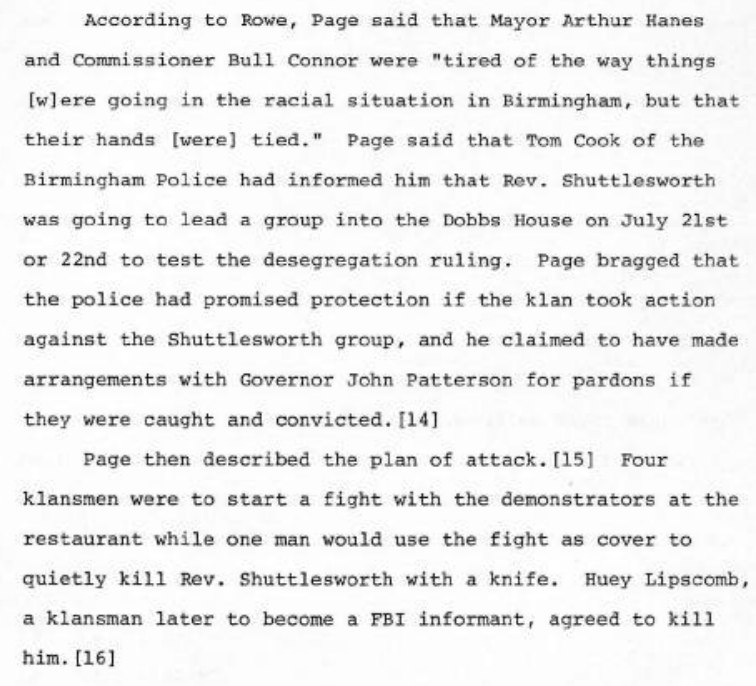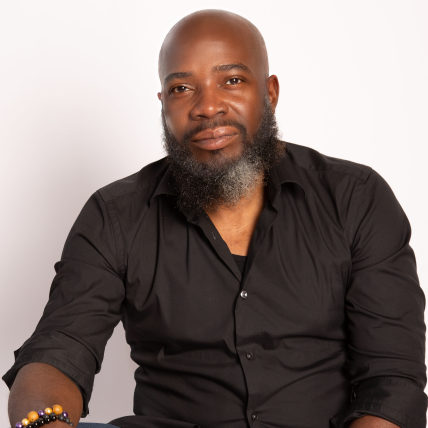60 years ago, the US government let terrorists bomb a Black church
OPINION: On this day in 1963, authorities finally had all the evidence needed to end the most violent terror campaign in American history. But, since the victims were Black, they did nothing.
Editor’s note: The following article is an op-ed, and the views expressed are the author’s own. Read more opinions on theGrio.
On August 10, 1963, a domestic terror cell of violent white supremacists targeted a historic Black church near Birmingham, Ala and set it ablaze.
No, not that one.
By the time 19 sticks of dynamite exploded at 16th Street Baptist Church on Sept. 15, 1963, the citizens of “Bombingham” had become accustomed to terrorism. Between 1955 (a year historians generally mark as the beginning of the civil rights movement) and 1963, white supremacists had attempted at least 29 bombings in Birmingham, Ala., including multiple churches, Black-owned businesses, the hotel room occupied by Martin Luther King Jr. and the home of King’s brother.
Most people assumed the Ku Klux Klan was the culprit, but, of course, there were plenty of rumors. Some accused the police of conspiring with the KKK. Some believed the FBI was involved. King and other Black leaders probably sounded absurd when they accused the CIA, the state police, local officers and the U.S. military of participating in a government plot to destroy the civil rights movement.
But some conspiracy theories are true.
Paranoid colonial loyalists once believed a secret anti-fascist organization was plotting against the British government…Until the Sons of Liberty organized the Boston Tea Party. Journalists thought Bill Jenkins, a Black epidemiologist, was delusional when he tried to tell them the government was secretly conducting medical experiments on Black citizens in Alabama. We now know that he was not crazy.
Because of FBI files, investigative journalism and congressional testimony, we now know that federal agents were aware a nearby KKK chapter had been working with trained demolition experts. Authorities had arrested the Klansmen with a cache of military weapons. The feds had even arrested the men who were later convicted in the 16th Street Baptist Church bombings with a dozen sticks of dynamite.
On August 10, 1963, Klansmen destroyed a 100-year-old Black church. The next day, the FBI learned that one of their informants was involved. With this evidence, they had a chance to end the most violent terror campaign in the history of America.
They did nothing.
One month later, 19 sticks of dynamite ripped through 16th Street Baptist Church, injuring 20 parishioners and killing 14-year-olds Addie Mae Collins, Cynthia Wesley, and Carole Robertson, as well as 11-year-old Carol Denise McNair.
It was a conspiracy.
The Church at the Fork:
St. James United Methodist Church sits at the intersection of Main St. and Trafford Road in Warrior, Ala. It has served Black residents in the small town outside of Birmingham longer than the town technically existed. But even though the “Church at the Fork” was founded in 1884, the original structure was destroyed on August 10, 1963, when Klansmen Charles Gagle and Levie Yarbrough threw a five-gallon gasoline bomb through the church window, burning the historic sanctuary to the ground.
The culprits are well-known. Their names can be found in history books and FBI files. Local cops, state troopers, judges and even the FBI knew about the bomb-happy Klansmen who committed this heinous act. Yet they were celebrated as heroes. Because of their terrorist activities, an entire section of Birmingham is still known as “Dynamite Hill.”
Cagle and Yarbrough were members of the National States Rights Party and Eastview Klavern 13, described as “the most violent urban Klan unit in American history.” Chapter members included “Dynamite” Bob Chambliss, Bob Cherry and Edward Blanton, the men convicted of the infamous 16th St. bombing. This was their second attempt to bomb St. James UMC; the first attempt in November 1962 failed. In redacted FBI files, agents connect the incident with the 16th Street bombing, as well as the names of the men involved. The report even acknowledges that the racists were arrested five years earlier for “setting off explosives.”

Years later, a journalist’s undercover investigation would expose that Green Berets from the US Army’s Special Forces 20th National Guard unit in Birmingham had collaborated with the Eastview Klavern. In exchange for monitoring “subversives” like Martin Luther King Jr., Eastview Klavern Klansmen received advanced training and military-grade weapons, eventually becoming the “20th’s intelligence network, whose information was passed to the Pentagon.”
However, one important name does not appear in the FBI files.
Gary Thomas Rowe.
The Inside Man
“On 10 August 1963, Gary Rowe and 30-odd confederates staged a diversion at a carnival in Warrior, Alabama, while Charles Cagle and another knight burned down a local church.”
According to a Department of Justice Task Force, in April 1960, Special Agent Barret Kemp successfully convinced dimwitted white high-school dropout Gary Thomas Rowe to become an FBI informant. Rowe had repeatedly failed the entrance exam required to achieve his dream of becoming a police officer. After serving in the Marines, he joined a different kind of paramilitary unit–Eastview Klavern No. 13. He would earn his money.
The Eastview leadership eventually chose Rowe to lead its “action squad”–the most violent part of the violent chapter. The Justice Department Gary Rowe Task Force report later noted: “The FBI was aware that an action squad was a ‘violence squad’ designed to handle all ‘major operations’ for the Klan including floggings, bombings, and harassment, which could, theoretically, result in jail sentences for the participants.”
Although he was never charged, Rowe is suspected as the fifth participant in the 16th Street bombing. He admits he was present at multiple attacks on Black citizens and confessed to the murder of at least one Black man. The FBI suspected him of more, but they were more concerned with hiding their man on the inside. So, for years, Alabama’s law enforcement community, the FBI and the local agents allowed Rowe to commit violence against Black people.
On Monday, May 15, 1961, the day after Rowe and dozens of Klansmen attacked Freedom Riders in Anniston, Ala., FBI agent Tom Cook called Rowe to tell him that he had done a “goddam good job down there.” But the FBI had a problem. During the mob’s attack on the Black activists, a local newspaper photographer from the Birmingham Post-Herald had captured Rowe on film. But the agent had an idea.
According to a transcript from the October 1975 Senate Committee on Intelligence that was later released by the DOJ Task Force, the FBI instructed Rowe to lie about the photograph.
Question: What did the FBI tell you with respect to that picture of you?
Rowe: Quote, “We’re all in a bunch of shit. The Big Man is going to have a nervous breakdown when he sees this. Now, here’s what you’ve got to do, to the day you die–! don’t care if The Man himself tells you, ‘Goddarnnit, Gary Thomas Rowe, Jr., I know that’s you’–you’re going to look at him, straight in the eye and say, ‘No, sir. That’s not me. That’s Arnie Cagle.’
Question: Now, “The Man” refers to whom?
Rowe: I’m sorry. The Man, through the years, was referred to as Mr. Hoover.
Question: The FBI agents were asking you to always maintain that that picture was of a man who resembled you, who was also a klan member, but not you?
Rowe: That is correct, until the day I die.
The agents authorized a payment of $150 to Rowe for “services rendered” and sent a cable to FBI director J. Edgar Hoover misidentifying Rowe as Charles “Arnie” Cagle, the Klansman who would go on to bomb St. James UMC. This is how we know the FBI had Cagle on their radar.
A month later, on June 8, Alabama State Troopers stopped Rowe, Cagle and four other Klansmen outside of Tuscaloosa, Ala. as they were transporting deadly weapons. The troopers explained that “some bastard called the FBI and told them you had all these weapons,” which court documents listed as six pistols two bayonets and two nightsticks. After they were briefly jailed, they were released by “a judge who hosted Klan meetings in his courtroom.” The judge ordered the police to return the weapons to the terrorists.
This is how we know state troopers had Cagle on their radar.
Rowe would later provide an actual list for the FBI, which included:
One Bazooka rocket launcher
Six rockets
Five carbine machine guns
Four shotguns
A submachine gun
Six teargas grenades
12 sticks of dynamite.
Cagle would be arrested again on September 4 along with “Dynamite” Bob Chambliss and charged with illegally possessing dynamite. This time, he would be convicted, fined $100 and sentenced to 6 months in prison. A year later, his conviction was overturned on appeal because he didn’t have the dynamite in the city limits. While out on bail, Chambliss and his terrorist cell bombed at least seven other sites, including 16th Street Baptist Church. Aside from Cagle, the FBI had been watching the men for at least five years.
Chambliss wouldn’t be prosecuted for his role in the 16th Street Baptist Church bombing until 30 years after the act. Thomas Edward Blanton wasn’t convicted until 2001. In 2002, Bobby Frank Cherry was convicted. Although the Bureau has mountains of evidence connecting Rowe, Cagle and Herman Cash to multiple terrorist plots, they have never been prosecuted for their alleged activities.
The End
In 1965, Klansmen shot and killed a Viola Liuzzo and Leroy Moton. Liuzzo was a white volunteer who was murdered while giving 19-year-old Moton a ride during the Selma Voting Rights March in 1965. Gary Rowe was in the car.
The resulting investigation would expose Rowe’s work with the FBI. He would admit to participating in multiple assaults, numerous bombings and at least three killings. His FBI file contained advanced reports that Alabama’s governor, Birmingham’s mayor, police commissioner and the Klan collaborated in an assassination attempt on Birmingham’s legendary civil rights leader Rev. Fred Shuttlesworth.

Mr. Rowe disappeared into the Federal witness protection program. In 1975, before the Senate Select Committee on Intelligence, Rowe said that “in 1961 he had given the F.B.I. advance warning of an attack in which he and other Klansmen participated, beating Freedom Riders with baseball bats, chains and pistols at the Birmingham bus station,” the New York Times reported. “He said …he had advised his F.B.I. contacts of this three weeks in advance. He added that when he asked his bureau contacts after the attack why nothing had been done, he said he was told: ‘Who were we going to report it to? The Police Department was involved.'”
According to Rowe’s handler, even if the Bureau had known Rowe was involved in violence, “We would have understood his actions, explaining that Rowe may have committed violence in order to keep the klan from knowing he was an FBI informant.” US Attorney John Doar’s papers on the Liuzzo killing contain a note in his handwriting: “Rowe fired gun. Tommy Rowe pulled out gun and fired.” Doar wrote on another page: “Even if Rowe did the shooting, people are all guilty.”
In the Rowe Task Force report, there is an entire section on dynamite blasting caps. It notes the FBI’s Special Agent in Charge (SAC) of Birmingham knew Rowe had them in his possession. “The SAC did not advise his superiors in Washington when seeking further payments for Rowe that Rowe had blasting caps in his possession,” the report explains. “Nothing in the files indicates that the FBI asked Rowe why he acquired blasting caps or whether he ever used them. However, Special Agent Blake recalls that Rowe told him that he kept the blasting caps as a ‘cover.’ Thus this event did not trigger a suspicion that Rowe was involved in the 1963 Birmingham bombings, even though agents learned he had the blasting caps when the bombings occurred.”
To this day, 60 years later, the incident at St. James United Methodist Church remains officially “unsolved.” No one has ever been arrested.
If only someone had known.

Michael Harriot is a writer, cultural critic and championship-level Spades player. His book, Black AF History: The Unwhitewashed Story of America, will be released in September.
TheGrio is FREE on your TV via Apple TV, Amazon Fire, Roku, and Android TV. Please download theGrio mobile apps today!
The post 60 years ago, the US government let terrorists bomb a Black church appeared first on TheGrio.

